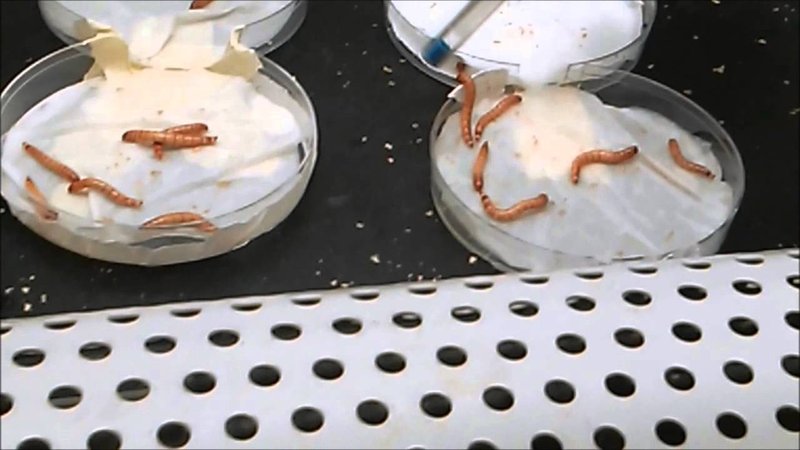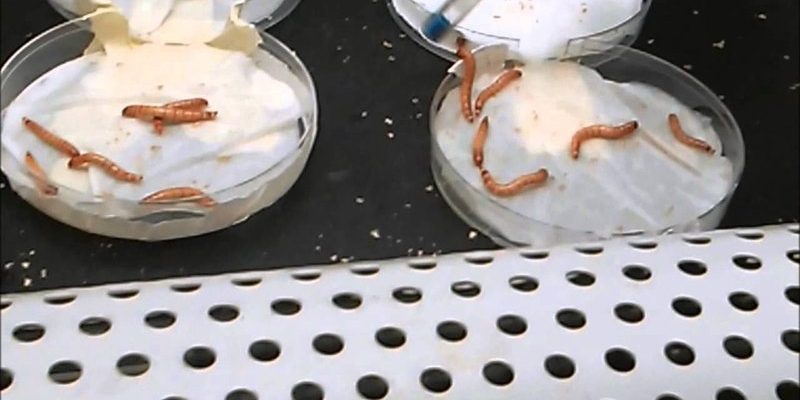
Mealworms are the larval form of the darkling beetle, and they can teach students about life cycles, digestion, and even environmental sustainability. Using mealworms in science demonstrations is not just about watching them squirm around; it’s about connecting students with real-life science. It makes the learning experience more interactive and helps them grasp complex concepts in a fun and memorable way. So, whether you’re a teacher, a parent, or just someone interested in boosting your knowledge about the natural world, let’s dive into how you can use mealworms in school science demonstrations.
Why Choose Mealworms for Science Demonstrations?
You might be wondering, “Why mealworms specifically?” First off, mealworms are easy to handle and maintain. They don’t require fancy equipment or a lot of space. Plus, they’re incredibly resilient creatures. A little bit of moisture and some food, such as oats or veggies, and they’re good to go! This makes them ideal for classrooms where space and resources can be limited.
Another reason mealworms shine in educational settings is their life cycle. They start as eggs, transition into larvae (which we commonly refer to as mealworms), then pupate, and eventually become adult beetles. This complete metamorphosis offers students a firsthand look at biological processes. Observing these stages can lead to fascinating discussions about growth, change, and survival in the animal kingdom.
Most importantly, using mealworms can spark interest in larger issues related to sustainability and nutrition. Mealworms are often touted as a more eco-friendly source of protein compared to traditional livestock. Discussing this can help students think critically about food sources and environmental impact—all while observing something as simple as a mealworm!
Setting Up Your Mealworm Science Experiment
Getting started with mealworms in the classroom is straightforward. First, gather your materials. You’ll need:
- Container: A clear plastic box with holes for ventilation works great.
- Substrate: Use oats or bran as a bedding material.
- Moisture: Add a small piece of potato or carrot for hydration.
- Mealworms: Purchase live mealworms from a pet store or online supplier.
Once you have your setup, it’s time to talk about the environment that mealworms need. They thrive in cooler temperatures, ideally around room temperature, and should be kept in a dark place. You can use a cardboard box or a cupboard to provide a low-light setting, mimicking their natural habitat.
After setting everything up, let the students explore the mealworms. They can *observe* their behaviors, examine how they interact with their environment, and even draw comparisons to other insects. This hands-on experience is where the real learning takes place, as students can ask questions and see science in action.
Exploring the Life Cycle of Mealworms
One of the best parts of using mealworms is the chance to observe their life cycle. Start with the eggs, which are often laid in the substrate. When the eggs hatch, that’s when the fun begins!
The mealworms, which are really just larvae, eat and grow. You can mark the date when you first see the larvae and track their growth over several weeks. This can lead to fascinating discussions on topics like growth rates and factors that influence development.
As students observe the mealworms grow, they might notice how they shed their skin—a process called molting. This can open a dialogue about what it means to grow and change, not just for mealworms but for all living organisms. Students can even keep a journal to document their observations, drawing pictures and noting changes.
Finally, as the mealworms pupate, they’ll transform into beetles. This part of the cycle is particularly exciting for students, as they can witness a dramatic change in form. Discussing why some species undergo metamorphosis and others don’t can lead to deeper conversations about evolution and adaptation.
Conducting Experiments with Mealworms
Mealworms are excellent subjects for conducting simple experiments that can demonstrate scientific principles. For example, you could set up a basic experiment to test how light affects mealworm movement.
Here’s a quick step-by-step guide:
1. Set Up Two Containers: One with light and one in the dark, using a barrier to separate them.
2. Introduce Mealworms: Place an equal number of mealworms in each container.
3. Observe Movement: Over a set period, observe which container the mealworms prefer.
4. Record Findings: Students can note down their observations and draw conclusions based on their findings.
This kind of experiment ties directly into discussions about behavior, adaptation, and even scientific methods. Students learn how to form hypotheses, conduct experiments, and analyze data—all while having fun with live creatures!
Using Mealworms to Teach Sustainability
In recent years, there’s been a growing conversation around sustainability and food sources. Mealworms are often highlighted as a sustainable protein alternative. They require less water and feed than cows or pigs, making them a more eco-friendly option for food production.
Incorporating mealworms into science demonstrations can help students understand these concepts practically. You can discuss how mealworms are raised, what they eat, and why they can be considered an efficient source of protein.
Consider encouraging students to research mealworm farming and its environmental benefits. They could present their findings to the class or create posters demonstrating how mealworms can be part of a sustainable future. This can help them think critically about the food system and their roles within it.
Mealworm Care and Ethical Considerations
While mealworms are fascinating to observe, it’s important to remember that they’re living creatures. Teaching students about proper care is essential. They should learn how to keep mealworms in a clean environment and provide adequate food and water.
You might also want to discuss the ethical considerations of using live animals in the classroom. This includes understanding their life cycle and ensuring that they are treated with respect. If you choose to end the experiment after seeing the life cycle, it’s good to talk about humane ways to dispose of them or even consider how they can contribute to composting or feeding pets.
Creating a supportive environment around these discussions fosters empathy and responsibility in young minds. It’s not just about learning science; it’s about developing a respectful relationship with all living things.
Wrapping Up the Mealworm Experience
Using mealworms in school science demonstrations can spark a love for science that lasts a lifetime. From observing their life cycle to conducting experiments, mealworms provide a hands-on learning experience that engages students in various scientific concepts.
By incorporating discussions on sustainability, ethical considerations, and proper care, you’re not only teaching students about biology but also fostering critical thinking and empathy. So, whether you’re a teacher planning the next big classroom experiment or a curious parent looking for educational activities, mealworms might just be the perfect addition to your science toolkit.
Science is everywhere—it’s just waiting for someone to dig a little deeper, just like a mealworm burrowing in the soil!

